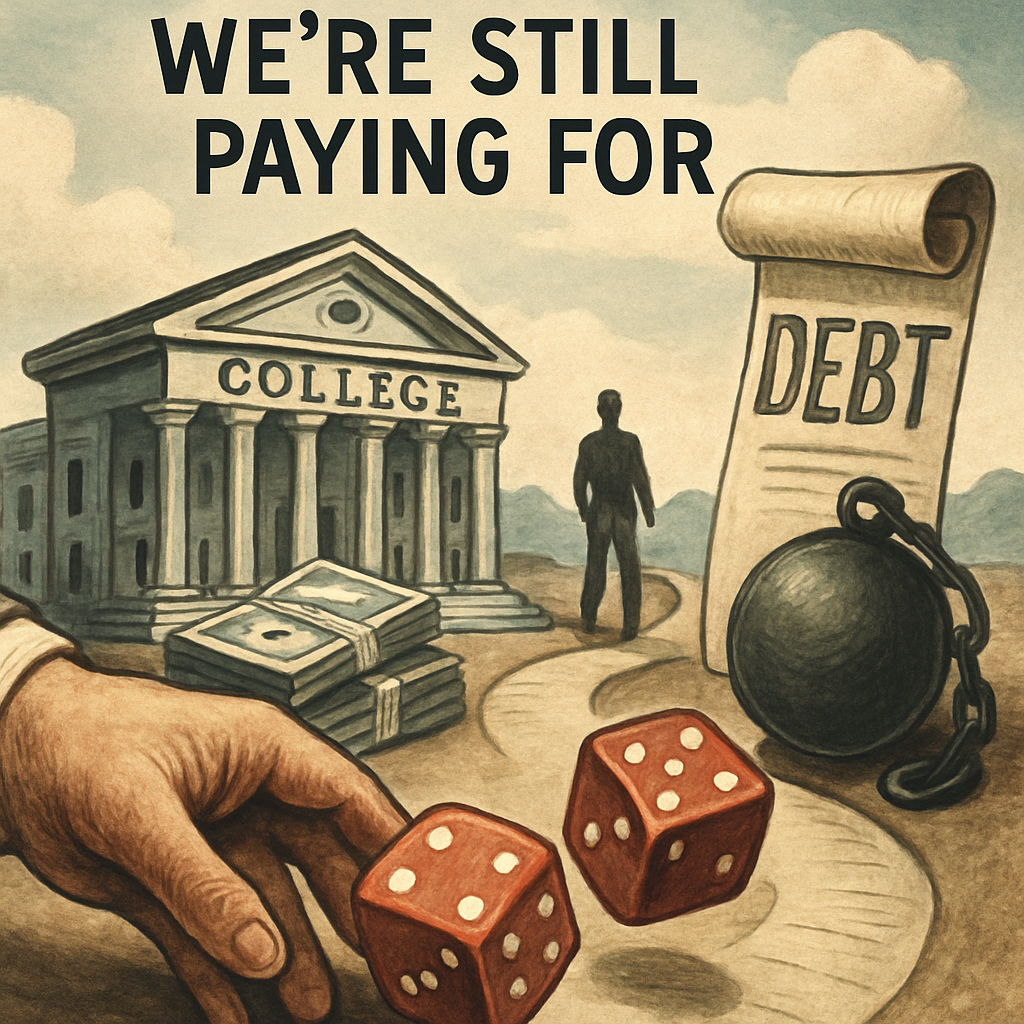
There was a time, not long ago, when America understood the value of investing in its people. In the decades following World War II, this country did something unprecedented: it made higher education accessible, affordable, and for millions of families, essentially free. State universities opened their doors not just to the elite or the wealthy, but to anyone willing to put in the work. College wasn’t seen as a luxury good or a private benefit. It was a public investment—a bet on the idea that a better-educated workforce would build a stronger, freer, more prosperous nation.
We weren’t a perfect country. We carried deep flaws—segregation, inequality, and injustices that were crying out for reform. But structurally, we were building something real. Public education, public infrastructure, and public trust were all woven into a system that, however imperfectly, offered upward mobility to anyone willing to seize it. We were thriving economically. Our middle class was the envy of the world. Our innovation drove global leadership. And higher education was a ladder, not a trap.
But something shifted. Not because the idea of public investment stopped working, but because fear and frustration gave politicians an easier path. As the 1960s wore on, America’s campuses became centers of activism. Students protested against segregation, against inequality, and—most loudly—against the Vietnam War. Some of those protests remained peaceful, living up to the highest traditions of free speech and democratic dissent. Others crossed the line into violence and chaos, fueling a growing backlash among the public.
Ronald Reagan saw an opportunity. Running for governor of California in 1966, he campaigned on a promise of “law and order”—and on a pledge to end what he portrayed as taxpayer-funded radicalism on college campuses. Reagan wasn’t alone in his frustration; many Americans were tired of seeing images of burning flags and occupied buildings. But instead of addressing the underlying grievances, instead of engaging with why so many young Americans had lost faith in their government, Reagan—and others who followed his lead—chose a different target: the public structures that made protest possible in the first place.
Once in office, Reagan pushed to introduce tuition at University of California schools, which had previously been tuition-free for in-state students. He slashed public funding and shifted the narrative: higher education was no longer a public good—it was a personal benefit. If students wanted to protest, they could pay for the privilege themselves. It was a politically brilliant move. It redirected public anger away from the real structural failures and toward the very institutions that had once expanded opportunity.
The change was profound. And it triggered a slow-motion crisis we are still living with today. Once college was no longer seen as a public investment, everything else changed. Grants turned into loans. Modest fees turned into skyrocketing tuition. Public universities, once the engines of upward mobility, became businesses selling credentials. The federal government expanded loan programs to fill the gap, but with no real pressure on colleges to control costs. Tuition soared. Debt exploded. And what was once a ladder to the middle class became, for millions, an anchor tied to their financial futures.
Critically, while the funding for public universities collapsed, the tax burden on ordinary Americans did not shrink proportionately. There was no massive refund sent back to the people. There were no sweeping tax cuts tied directly to the money that had once supported higher education. For most families, taxes stayed roughly the same relative to inflation—but the benefits they once paid for quietly disappeared. It was, in essence, a form of political shrinkflation: citizens kept paying for a full service, but ended up receiving a hollowed-out version instead. The cost of government didn’t shrink; only what people received for their investment did.
As we sit here, it feels almost unimaginable to suggest that higher education could be affordable for everyone. We have forgotten how ordinary it once was. Not long ago, attending a public university wasn’t seen as a luxury or a risk—it was simply part of the American experience. Students didn’t mortgage their futures to access opportunity. Families didn’t dread the price of ambition. In the span of a few decades, we have normalized the absurd. What was once common sense has been repackaged as an impossible dream.
Today, student loan debt in America stands at over $1.7 trillion. Entire generations delay buying homes, starting families, and saving for retirement because of the crushing weight of that debt. And it didn’t happen by accident. It didn’t happen because college got “better” or because costs naturally rose. It happened because a deliberate policy shift—made in the heat of political frustration—redefined education as a private luxury, not a public good.
The damage extends beyond individual households. America’s global dominance was built not just on military might, but on innovation—on being the country that produced the best engineers, scientists, entrepreneurs, and leaders. That dominance was fueled by affordable, accessible education. When we defunded that system, we didn’t just make life harder for students. We hollowed out the foundation of American leadership itself. Other nations watched us retreat from public investment and doubled down on their own systems. Today, countries like Germany, South Korea, and Canada invest heavily in higher education, seeing it as critical to national strength. Meanwhile, we saddle our brightest young minds with decades of debt and wonder why economic mobility is stalling.
And the longer we let this structure persist, the worse it will get. Student loan debt isn’t a static crisis. It’s a growing one. Every year, more young Americans are pushed further behind before they even have a chance to participate fully in the economy. Every year, innovation is strangled by the simple fact that it’s harder and harder to take risks, start businesses, or invest in the future when you’re chained to past debt.
It’s easy to look back and blame Reagan, or blame the era. But the truth is bigger than any one politician. The real lesson here isn’t about one bad actor—it’s about the cost of short-term thinking. It’s about what happens when anger drives policy instead of vision. It’s about what happens when we weaponize public frustration instead of reforming public institutions. One short-sighted decision, made fifty years ago, has rippled outward into an entire national decline.
Where do we go from here? That’s the question we now face. We can either continue pretending that the structure will fix itself—that individuals should simply “work harder” to overcome barriers we placed in their way. Or we can acknowledge the obvious: bad structure produces bad outcomes. Rebuilding public investment isn’t charity. It’s survival. We have the blueprint. We know what worked before. The only thing missing now is the will to admit where we went wrong—and the courage to start building again.
It’s worth remembering, too, what sparked the backlash that set this decline in motion. Many of the movements that fueled campus protests—civil rights, opposition to the Vietnam War—have since been validated by history as moral imperatives, not reckless indulgences. The instinct to challenge injustice, to demand a government accountable to its people, was not a flaw in those students. It was a signal that the system was straining under the weight of its own contradictions. The tragedy is that instead of listening, too many chose to silence. Instead of reforming the system that produced such disillusionment, they punished the structures that gave ordinary citizens a voice. And in doing so, they hollowed out the very foundation they claimed to protect.
Learn more at TheRoundtableRevolution.org
